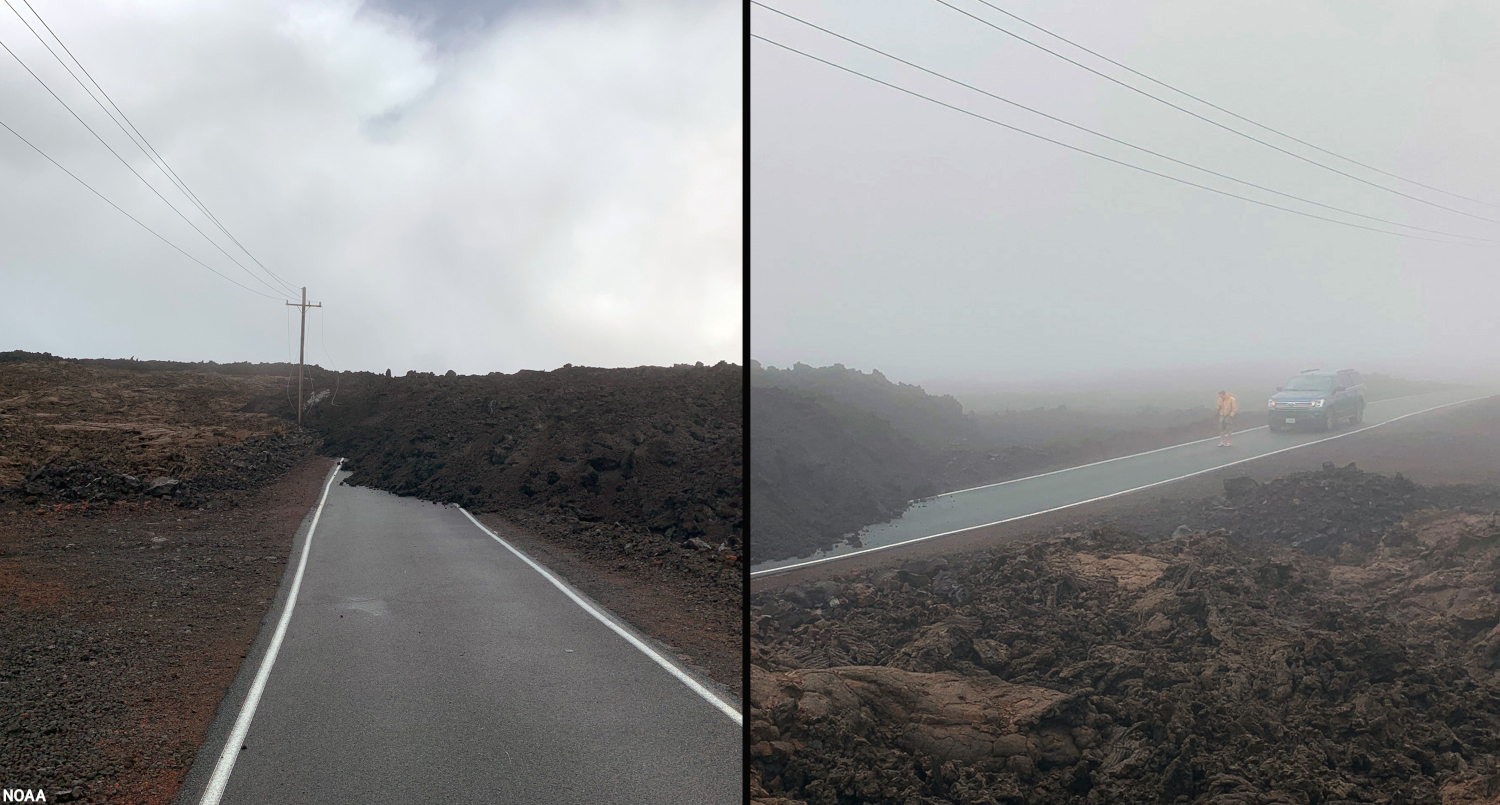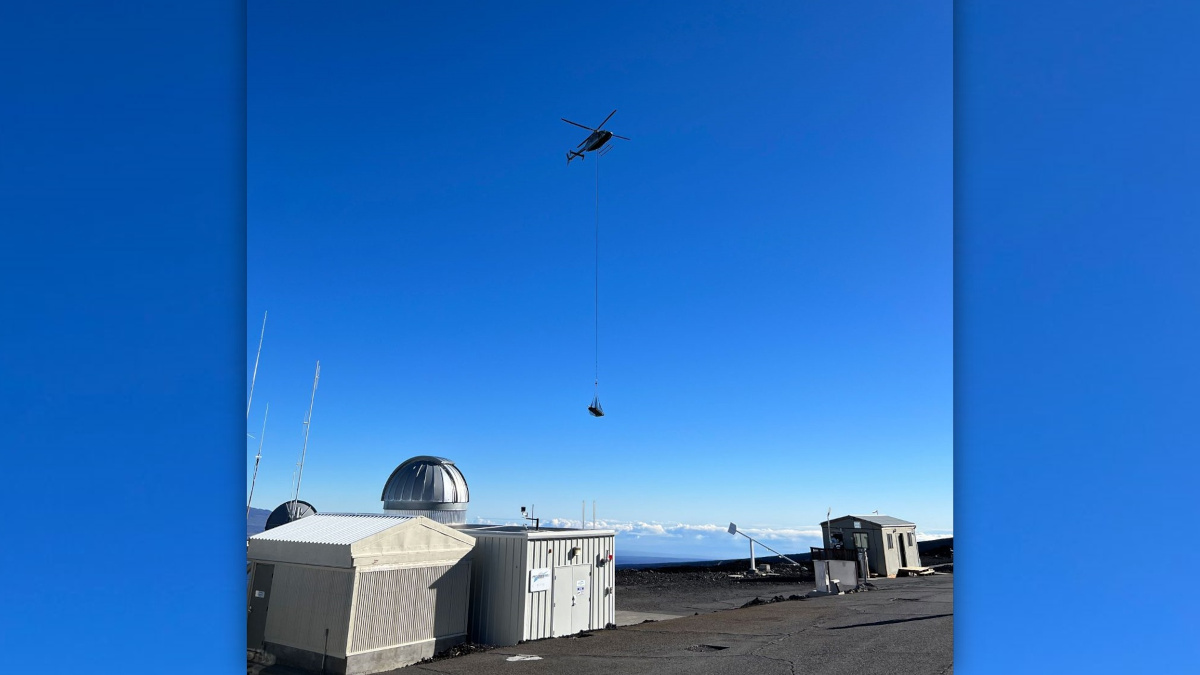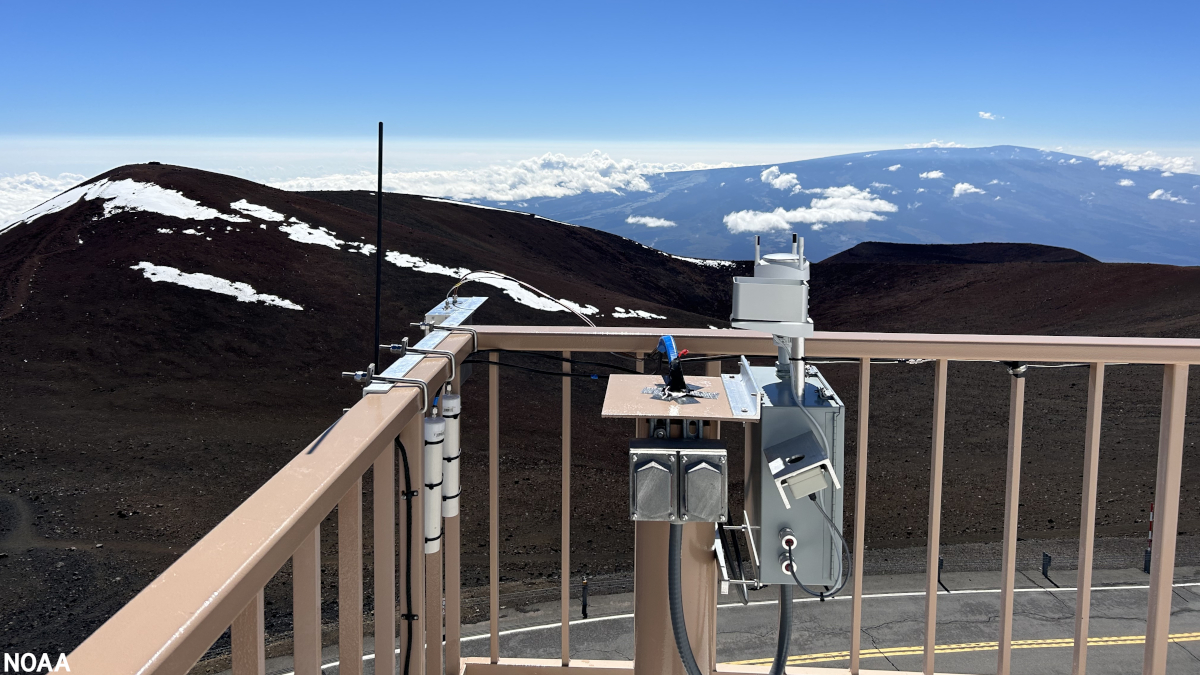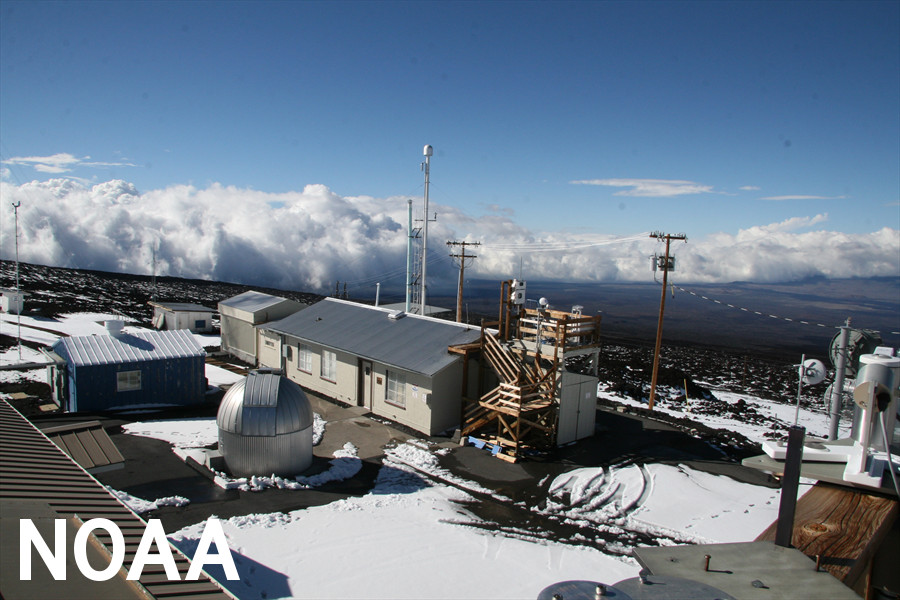
NOAA: “Lava covering the access road to the NOAA Mauna Loa Baseline Observatory during the 2022 Mauna Loa eruption.” (NOAA)
(BIVN) – The Mauna Loa Observatory is back measuring the carbon dioxide in the Earth’s atmosphere, three months after the end of the lava eruption that forced scientists to abandon the facility.
The Keeling Curve, the famed-daily record of global atmospheric CO2 concentration maintained by the Scripps Institution of Oceanography at UC San Diego, announced that measurements resumed on Mauna Loa as of March 9th.
Lava flows from the volcano cut off the access road to the observatory on November 28th of last year.

“Helicopter delivers photovoltaic rails, electrical conduit, and solar panels to Mauna Loa Observatory.” (Photo: Scott Prestien/EPC)
A helicopter was used to lift a solar power/battery system to the National Oceanic and Atmospheric Administration facility.
The team began recording daily greenhouse gas measurements from a temporary location at the University of Hawaii astronomical observatory on Maunakea. However, that analyzer stopped sending data on March 7th. The cause of the interruption is unclear.

NOAA: “Photo of an air intake tube at Maunakea Observatories in Hawaii. The system was installed on December 8, 2022.” (NOAA)
NOAA said in February that once access to the Mauna Loa observatory is restored over the lava flows, there will be a major renovation and facility upgrade at the observatory. This includes refurbishing the Keeling building, installing fiber optic infrastructure, and removing obsolete facilities.
From NOAA:
NOAA’s Mauna Loa Atmospheric Baseline Observatory, the benchmark sampling site for monitoring global climate change, is slated to undergo a major renovation and facility upgrade once road access is restored over lava flows produced by the recent eruption of Mauna Loa volcano, NOAA announced today.
The redevelopment project will modernize the site’s aging infrastructure and renovate the historic Keeling building. Plans call for increased solar generation and installation of a battery power backup system to make the observatory more energy efficient and more resilient to future natural disasters. The project will increase the observatory’s scientific capabilities and create new opportunities for research collaboration.
“Mauna Loa is a premier international research facility,” said Ariel Stein, acting director of NOAA’s Global Monitoring Laboratory. “This project will honor our history as we upgrade our scientific facilities, make them energy-efficient and generate power on-site to reduce the risk of disruption. This will provide a more productive and effective research campus for NOAA and our scientific partners for decades to come.”
At an elevation of 11,141 feet on the north flank of the Mauna Loa volcano on Hawaii’s Big Island, scientists at the observatory have compiled the longest record of rising levels of greenhouse gases driving global warming. The Mauna Loa Observatory supports hundreds of measurements that are essential for scientists around the world working together to understand how the planet’s climate system is changing.
The Mauna Loa Observatory has operated since 1957 and consists of over a dozen small research buildings across an eight-acre campus. Charles David Keeling offsite link of the Scripps Institution of Oceanography initiated carbon dioxide measurements at the site in 1958. NOAA’s carbon dioxide measurements began in 1974.

NOAA: “Air samples from NOAA’s Mauna Loa observatory in Hawaii provide important greenhouse gas data for climate scientists around the world.” (Image credit: NOAA)
Mauna Loa is one of four baseline observatories stretching from the Arctic village of Utqiagvik, Alaska to the South Pole, which form the foundation of NOAA’s global network of atmospheric observation sites. Data is carefully analyzed and compiled in archives, like the Global Greenhouse Gas Reference Network, and made available to scientists worldwide.
Elements of the renovation project include: refurbishing the Keeling building; adding a new staff office area; updating the site’s workshop and staging area; and dedicating more space for cooperative research near the base of a new 130-foot tall sampling tower. The latter will replace an on-site, aging 120-foot sampling tower. Building designs will maximize roof-top solar energy generation. A new site-wide power and grounding distribution system will be installed, along with fiber-optic infrastructure. Obsolete facilities will be removed.
Observatory operations are currently curtailed by fresh lava flows from Mauna Loa’s November volcanic eruption, which buried about 6,000 feet of the access road and electric poles under as much as 30 feet of lava. While the facility lost power, the campus itself was not threatened. It will be several months before the lava is cool enough for engineers to re-establish the roadway.
To maintain the continuity of long-term observations, NOAA contracted with a local helicopter company, Paradise Helicopters, which began weekly flights to the site starting December 21, 2022, to collect air samples via a portable, battery-powered flask system. The flask samples are then shipped to and analyzed at NOAA’s Global Monitoring Laboratory in Boulder, Colorado. In January 2023, a battery storage system was delivered by helicopter and will be linked to existing solar panels to allow for the restart of some of the facility’s important sampling instrumentation.
NOAA and the Scripps Institution of Oceanographyoffsite link, which make independent, complimentary on-site measurements at the Mauna Loa Observatory, are currently taking daily greenhouse gas measurements from a temporary location at the University of Hawaii astronomical observatory on Maunakea. Maunakea is where the other giant shield volcano on Hawaii’s Big Island is located.
The timeline for renovation and facility upgrades will depend on when access to the road leading to the Mauna Loa facility is restored.

by Big Island Video News3:53 pm
on at
STORY SUMMARY
MAUNA LOA, Hawaiʻi - The Scripps CO2 program reported on Thursday that measurements resumed at Mauna Loa Observatory on March 9.